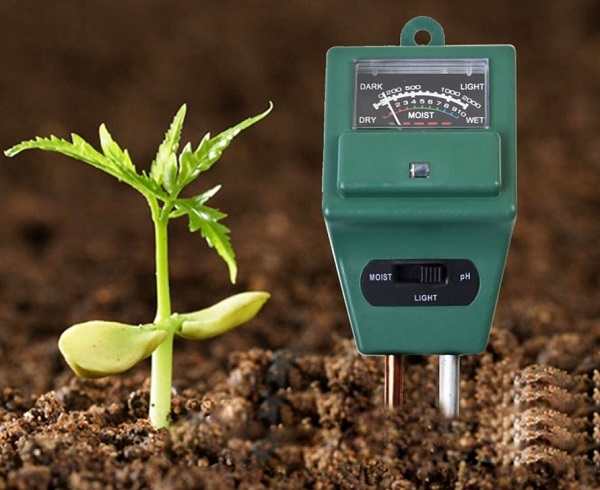Many gardeners have crop problems. They add fertilizer to the soil in time, weed the garden from weeds, water it, loosen the soil, but the plants still grow poorly. The degree of soil acidity is of great importance for the proper development of garden crops. On how to determine the acidity of the soil at home, we will discuss later.
Table of contents
Soil acidity
Micronutrients, entering the soil, after chemical reactions are converted into ions, which are actively absorbed by plants.The more hydrogen ions left after the reactions, the greater the acidity of the soil. In an acidic environment, most horticultural crops are not free to grow and eat.
Low-soluble salts dissolve perfectly in the acidic soil, the metal content increases. Because of this, the plants are poisoned, they accumulate harmful substances that prevent the entry of useful elements.
How to determine the acidity at home
To denote the measure of hydrogen activity and the degree of acidity, it is customary to use the pH value.
pH 7.0 is a neutral medium in the soil. This indicator corresponds to clean water. If the pH value is below 7.0, then the soil becomes acidic, above - alkaline.
Perhaps every gardener is concerned about the proper development of their crops. Therefore, the acidity of the soil can be determined independently.

With the help of a special device
Find out the acidity with a special device - the easiest way.First you need to make a recess in the ground, after clearing it of foreign objects (stones, branches, grass). Then pour there pure distilled water, since only it has a neutral medium.
As soon as the water reacts with the ground and becomes dirty, you should lower the gauge probe into the water for 1 minute. After that, the instrument displays the value of acidity.
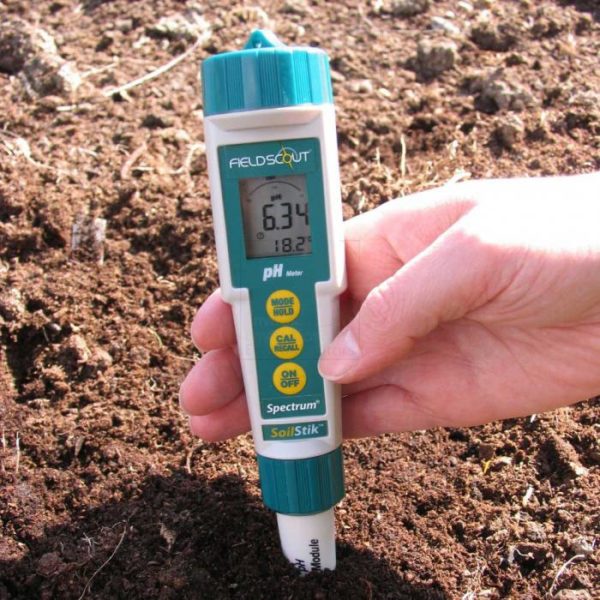
According to the plants on the site
On acidic soil well grow cucumbers, zucchini, tomatoes, eggplants, pumpkins, potatoes, sea buckthorn, currants, gooseberries, lemongrass, roses, geraniums, peonies, daffodils, tulips.
In soil with neutral medium Cabbage, beans, peas, carrots, beets, radish, celery, parsley, apple, pear, plum, cherry, raspberry, garden strawberries, dahlias, irises feel great.
For plants that prefer alkaline soil include: dogwood, barberry, hawthorn, arnica, lilac, juniper, cedar, quince, purple, apricot, mulberry, edelweiss, lavender.
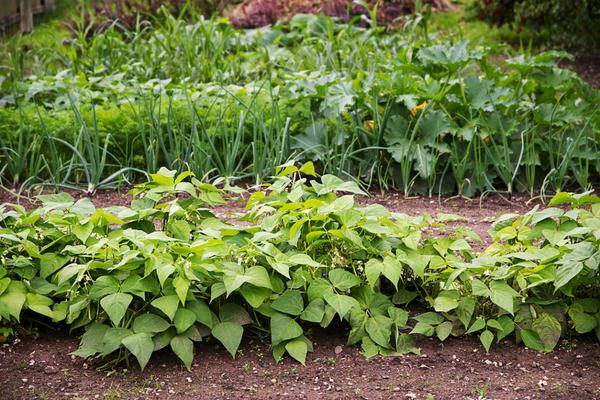
Over weeds
In an acidic environment they prefer to grow: sedge, ivan da maria, fern, plantain, horse sorrel, horsetail, wild rosemary, field mint, heather, cornflower, silverweed, tricolor violet, dandelion, clover, chamomile.
The neutral environment attracts adonis, sow thistle, field bindweed, nettle, quinoa, red clover, shepherd's bag.
In alkaline soil chicory, spotted milk, thyme, sage, Badan, thistle, mustard grow.
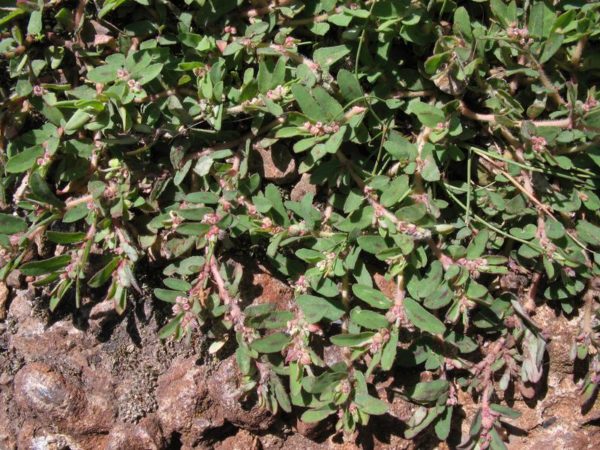
Using chalk
Two full tablespoons of land from the site to be put in a bottle. Then pour into it five tablespoons of warm water and a teaspoon of chalk, previously ground into powder. Put the rubber fingertip on the bottle, removing air from it. After that, you should shake it.
If the fingertip straightens, it means that the soil is acidic. If it is inflated only by half, it is slightly acid. If changes do not occur - neutral.
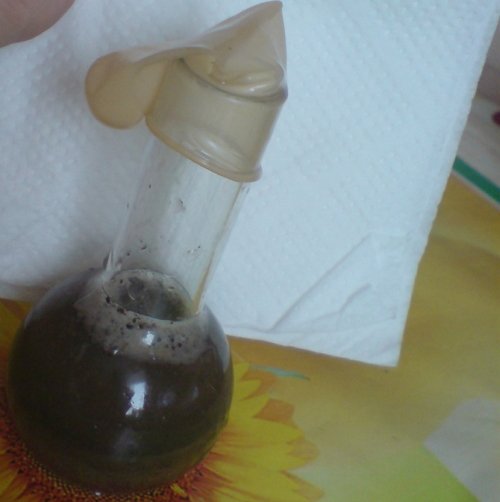
Litmus paper
Determination of acidity using test strips is the most accurate method. You can buy them in stores for gardeners. They are sold in the form of a set of 50 - 100 strips along with a color scale of pH values.
For the experiment, place ground and clean water in a ratio of 1: 4 in the tank, after which everything must be mixed well.
After the appearance of the earthen sediment, it is necessary to lower the litmus paper for several seconds into the water. Within one minute, a color should appear on the strip by which it is possible to easily determine the pH level of the soil.
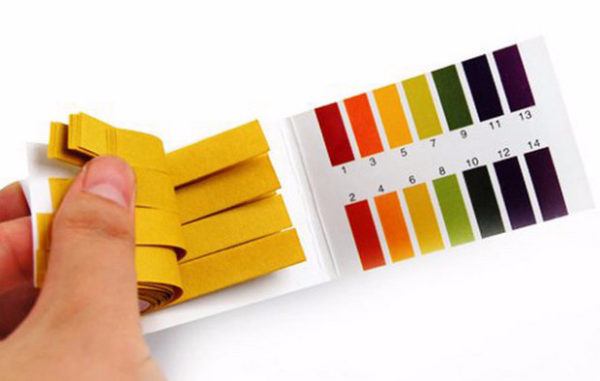
How to reduce or increase the acidity in the country
If measurements have shown that too acidic medium prevails in the soil at the cottage, it is necessary deoxidize. There are several ways to do this:
- Lime, previously slaked with water, is applied to the soil per 1 hundred part:
- strongly acidic pH level - 50-75 kg;
- medium acid - 45-45 kg;
- weak acid - 25-35 kg.
- With limestone flour (another name is dolomitic) it is possible not only to reduce the acidity of the earth, but also to saturate it with magnesium, calcium, and other trace elements. But this method will be inferior in speed slaked lime.
Calculate the required amount of flour is not difficult:
- strongly acidic medium - 500-600 grams per 1m2;
- medium acid - 450-500 grams per 1m2;
- slightly acid - 350-450 grams per 1m2.
- Calcium-containing substances can also lower the pH:
- Crushed chalk for 1m2 300 grams are introduced into the highly acidic soil, 200 grams to the moderate acid, and 100 grams to be slightly acid.
- Peat ash should be fertilized with a measure that is 4 times higher than the chalk application rate.
- Wood ash is used at the rate of 100-200 grams per 1m2.
- The most convenient way to deoxidize the soil is to buy special means to normalize the soil.
If the soil has an alkaline environment, it needs to be acidified:
- With the help of organic matter, such as fresh manure, leaf compost, high peat, sphagnum moss, rotted sawdust and needles. These substances slowly acidify the earth, but act for a long time.
- Mineral compounds will help reduce the alkalinity of the environment faster than organic:
- Colloidal sulfur significantly increases acidity. It is necessary to make it for the winter to a depth of 10-15 cm. The result will appear in about a year.
- Iron sulphate is faster, for this you need at 10m2 take 0.5 kg of the substance.
- The fastest method is to use acid solutions:
- 50 ml of sulfuric acid diluted in 10 liters of water. This volume is designed for 1m2 garden plot;
- 1-2 tablespoons of citric acid mixed with 10 liters of water.
The level of soil acidity is the most important indicator of plant growth and development. For the absolute majority of horticultural and fruit crops, a neutral environment is most favorable. To achieve such conditions, you can in a timely manner deoxidizing or acidifying the soil.
